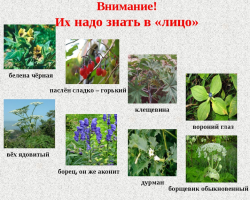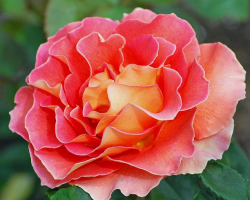Before planting plants, it is recommended to check the seeds for germination. How to conduct this procedure correctly, our article will tell.
Content
- Checking seeds for germination: germination periods
- Why does nothing sprout when checking seeds for germination?
- How to check the seeds of peppers, cucumbers, tomatoes, soybeans for germination: Methods
- Checking seeds for germination using salt solution: Instructions
- How to check the germination of carrots seeds?
- Video: Fast verification of seeds for germination and preparation for landing
The preparations of each gardener for the new season of plantings begin with the purchase of seeds or preparing reserves for landings. As a rule, before doing some work, a germination test is carried out. Often, gardeners have doubts about the quality of the material, since perhaps the shelf life of ready -made seeds has ended, or they were stored for a long time. Therefore, it is important to perform a check so as not to waste time on low -quality materials.
Checking seeds for germination: germination periods
To check the seeds for germination, it is important to know about the timing when they should germinate. As a rule, seeds need different times. It is compiled from 7 to 14 days. We offer you to get acquainted with the gifted timing of the most popular crops:

This table will help you navigate and understand when certain crops should still rise.
Why does nothing sprout when checking seeds for germination?
Sometimes there are situations when high -quality seeds are only in appearance. Even calibration or some other methods of their revival may be ineffective. If you decide to check the seeds for germination, you should also know about the reasons that can lead to a lack of germination.
- The conditions for germination are created incorrectly. For example, the plant does not like when there is a lot of water, and you poured it. In this case, of course, nothing will germinate for you. The same goes for temperature
- Incorrect storage. It is important to consider humidity in the room. Moisture inside the seed makes the temperature grow, which leads to overheating and loss of germination
- The seeds were overdried or unripe
- There are so -called light seeds. They are able to grow only open. If you close them on top, then there will be no result from them
- For the seed, the resting stage is not provided
- Seeds are damaged
How to check the seeds of peppers, cucumbers, tomatoes, soybeans for germination: Methods
Some novice gardeners believe that checking seeds for germination is an extra procedure, since on the packaging, so everything is indicated. However, in the end, the result is disappointed. This is due to the fact that on the package they write a laboratory germination, which is determined when seeds are almost in ideal conditions. Therefore, the indicators are almost one hundred percent. In real conditions, this result is almost impossible to achieve. Such germination is called field. It is determined by the number of healthy seedlings obtained after planting.

There are several ways to check the seeds for germination. Let's analyze them.
Method 1. Growing in wet fabric
This method allows you to understand how high the energy of germination is. For the exact result, you need to take a large amount of seed. Therefore, the method is more relevant for checking your personally collected materials.
The check is carried out as follows:
- First, fold gauze or thin cotton fabric in three layers
- Moisten the seeds slightly and put them on the prepared surface. The quantity may vary. In this case, the smaller the seeds, the more of them you need
- It is recommended to place gauze on a small saucer
- Cover it on top with another piece of gauze
- Moisten the seeds with water and cover with an inverted plate
Place the finished “design” in a warm place where the air temperature will not drop below 18 degrees. If the culture is cold -resistant, then the temperature can reach +25 degrees. For heat -loving, it is allowed from +25 to +30. While your seeds germinate, regularly inspect them and moisturize gauze. In no case do not let her dry out. In addition, plastic containers with a lid used for salads or baking are suitable for determining germination.
It is important to remove already sprouted seeds during the procedure. In each batch, consider the number and fix the result. Counting is carried out throughout the entire period. Upon its completion, determine how many seeds the sprouts did not give. For example, if 50 out of 100 seeds sprouted, then the percentage of germination will be 50.
Method 2. Paper Napkin

There is also a less expensive test method in the seed. However, it allows you to get only an approximate result. Many use it when there is no large stock of sowing material.
- Put a paper towel or towel on a saucer and moisten it with water
- Lay out about a dozen seeds on it and place a food film on top
- Put a saucer in a warm place where the temperature does not exceed +20 - +22 degrees
- Do an inspection daily and, if required, moisturize the napkin. She shouldn't dry out
Upon completion of the germination period allotted for the culture, calculate the percentage of germination.
Checking seeds for germination using salt solution: Instructions
Another good method that allows you to check the seeds for germination is a saline solution. By the way, the method is considered one of the fastest. It is also called calibration.
Thanks to calibration, the gardener can separate high -quality seeds that will give an excellent crop. Its meaning is to select the healthiest seeds that will definitely germinate. They will grow together, and it will be much easier to care for plantings.
So, for the procedure, prepare a special solution. Take 30-50 grams of table salt and one liter of water. Mix all together and you can start the procedure. Pour the seeds and leave in this state for two hours. As a result, high -quality seeds will be at the bottom, and everything else will come up. Just the latter must be removed. After that, gently drain the solution, and rinse and dry the seeds.
Keep in mind that after calibration you can use all the seeds, but only full -fledged small ones need to be planted separately from the rest.
How to check the germination of carrots seeds?

Separately, it is worth talking about how to check the germination of carrot seeds. They usually germinate in almost a month, as they have a shell of tannins, which dissolves for too long. It is they who are protection for seeds from frosts and delay the appearance of sprouts.
So you have to work hard to conduct a check:
- To get started, prepare a dense fabric. Take the piece not very large - the seeds should fit into it and there is a place for tying
- After that, put the number of seeds you need inside
- Now make a small bag of fabric, tied the ends. You can pull them with an elastic band
- Pour warm water into any bowl, about 50 degrees and place a home -made bag in it. Hold it there for a few minutes
- After that, immediately move it into cold water and also hold it for a while
- The procedure is carried out three times a day to remove all substances. As a rule, it takes two days
- Now take out and a bag of seeds, dry them. Can be laid out on a paper towel
- Pour a little earth into a small container. 2-3 centimeters are enough, and then lay out the seeds and close them with a thick layer of earth
- Do not forget to moisturize the soil
If everything is done correctly, then after 10-15 days the first shoots will appear.
Despite the fact that checking the seeds for germination is quite simple, you should not ignore important rules. This will allow you to accurately determine the quality of the material and get a good harvest.
Video: Fast verification of seeds for germination and preparation for landing
Read also:
- Thui cultivation: planting with seeds and cuttings, care, pruning, disease
- Kohlrabi cabbage: varieties, growing seeds and leaving in open ground
- Basilica seeds - food composition, beneficial properties, harm: how to be used in food?
- Characteristic and varieties of aloe for growing at home
- How to propagate at home orchid cuttings, roots, children and seeds?







